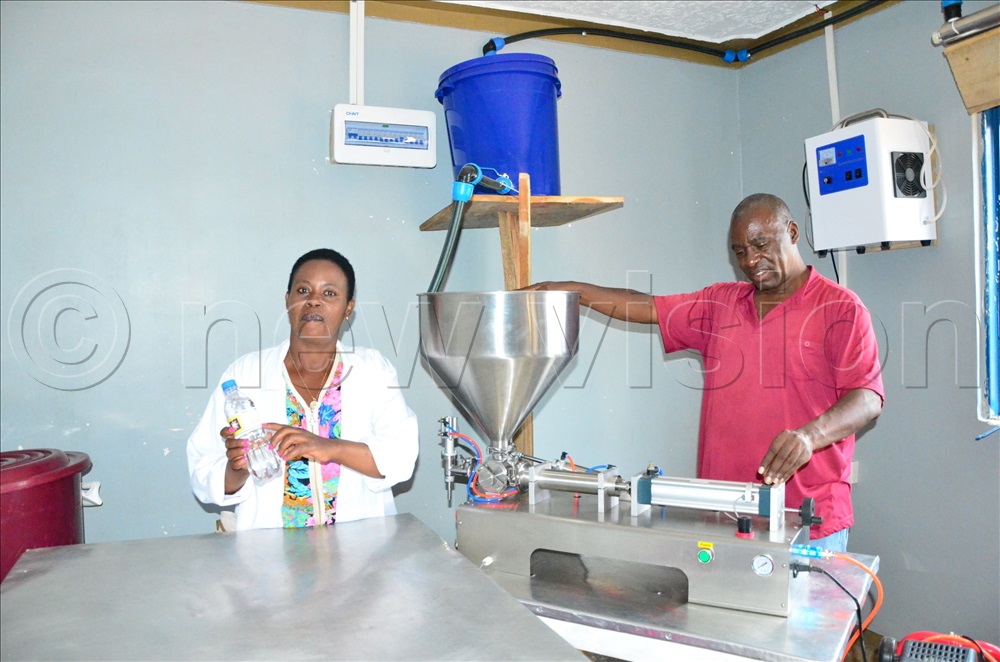By Umar Nsubuga
Rain, a gift from nature, often goes untapped, flowing away as runoff while communities grapple with water scarcity.
Yet, with proper harvesting techniques, rainwater can be a dependable resource, not just for domestic use but also as a source of clean drinking water.
Across Uganda and beyond, individuals are learning to harness rain effectively.
One standout example is Professor Kant Kanyarusoke, who has turned rainwater into pure drinking water on his farm, providing a model that others can follow.
The basics of rainwater harvesting
Harvesting rainwater is a simple yet transformative process that captures, stores, and utilises rainfall efficiently. Two primary systems are commonly used:
Above-ground water storage tanks
These tanks, placed above the surface, collect water through pipes connected to rooftops.
Underground water storage tanks
These tanks are built below the surface and channel rainwater from roofs or other catchment areas.

Both methods have their advantages, but the choice depends on the user’s needs, available space, and budget.
How professor Kanyarusoke harvests rainwater
At his farm, Professor Kanyarusoke employs an underground water storage tank system, a method he praises for its efficiency and reliability.
“These tanks collect all the rainwater through pipes channelled underground from the roof,” he explains.
With this setup, his farm can store up to 50,000 litres of water, ensuring a steady supply even during dry spells.
The process involves several steps:
Collecting rainwater
Rainwater is directed from the roof using a network of pipes. These pipes transport the water directly to the underground tank.
Filtering the water
As the water enters the tank, it passes through a filtration system. This filter removes debris, leaves, and other impurities, ensuring the stored water is clean and safe for use.
Storage in the underground tank
The filtered water is stored in the tank, where it remains protected from contaminants, evaporation, and sunlight.
Supplying the micro-factory
At his farm, Professor Kanyarusoke uses the harvested water to supply a micro-factory that produces drinking water. The water undergoes further purification to meet drinking standards, a process that involves additional filtration, UV treatment, or reverse osmosis.
Why rainwater harvesting matters
Professor Kanyarusoke emphasises the value of rainwater, urging others to stop wasting this precious resource.
“Don’t let any water get wasted and then turn around crying for water,” he says.
By harvesting rainwater, communities can reduce their dependence on unpredictable municipal water supplies and drought-vulnerable sources.
The benefits of underground tanks
Underground water storage tanks, like the one Kanyarusoke uses, offer unique advantages:
Space Efficiency, being underground, these tanks save surface space, making them ideal for farms or urban areas.
Temperature Regulation, underground tanks keep water cooler, reducing bacterial growth and preserving water quality.
Protection from Contamination, the enclosed system prevents exposure to contaminants like dust, animals, and insects.
Large storage capacity, these tanks can hold significant volumes, ensuring a reliable water supply during dry seasons.
Turning rain into drinking water
Rainwater, when properly harvested and filtered, can be turned into safe drinking water. The process involves:
Pre-Filtration, removing large debris during collection.
Advanced Filtration, using fine filters to remove microscopic particles.
UV Treatment, exposing water to ultraviolet light to kill bacteria and viruses.
Mineral Balancing, adding essential minerals back into the water, if needed, to enhance taste and nutritional value.
Kanyarusoke’s micro-factory exemplifies this approach, producing clean drinking water directly from rain.
A call to action
Professor Kanyarusoke’s efforts demonstrate the untapped potential of rainwater harvesting.
His 50,000-litre underground tank not only sustains his farm but also ensures a consistent supply of clean water for his micro-factory. He believes every home and community can replicate this model to address water scarcity challenges.
For those considering rainwater harvesting, he offers practical advice:
Invest in a quality system, choose tanks and filters suited to your needs and environment.
Regular maintenance, clean pipes and filters regularly to ensure water quality.
Educate yourself, learn about local rainfall patterns and storage techniques to optimise your system.





